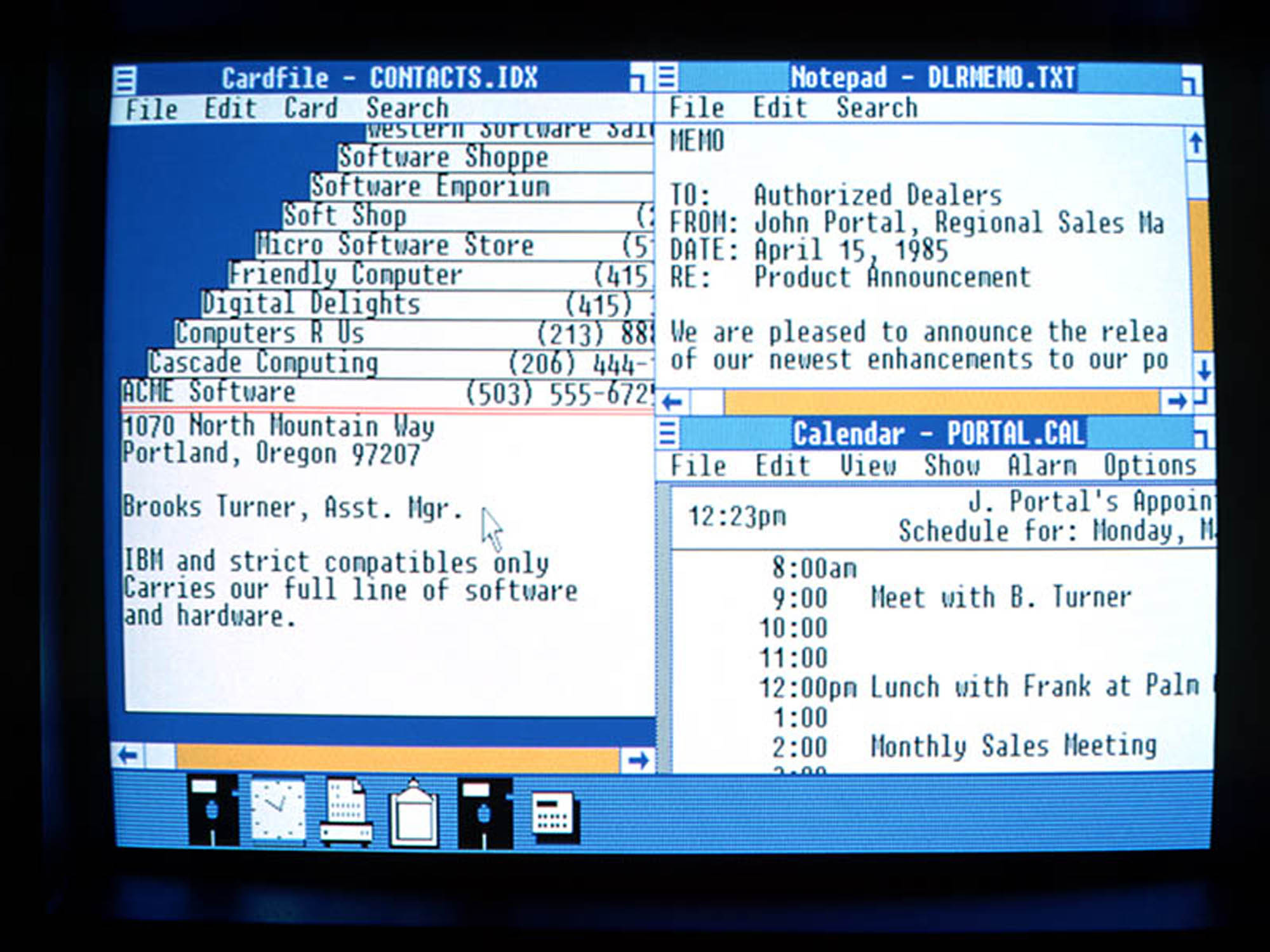
The first version of Microsoft Windows will be knocking on the door of its third decade Thursday when it turns the ripe old age of 29 — well past retirement in software years, given that Microsoft officially put it out to pasture in December of 2001. Still, looking back at Windows 1.0 offers exactly what its name implies: A window into how things used to be, and, in a way, how little has changed.
First announced in 1983, Microsoft Windows 1.0 wouldn’t make it to the consumer market for another two years — making it one of the first pieces of software to be dismissed as “vaporware,” a term actually coined by a Microsoft engineer a year before the Windows announcement, as a disparaging title bestowed upon a product that’s announced but never sees the light of day.
Windows 1.0’s big selling point was its Graphical User Interface (GUI), intended to replace MS-DOS-style command prompts (C:/DOS/RUN) with a computing style that looked much more like the multitasking, mouse-click-based computing most of us use today. It also came with software intended to show off its new graphical computing environment with what we’d now call “apps” like “Calendar,” “Clock,” and yes, of course, “Paint.”
Windows wasn’t the first operating system with a GUI as its primary feature. Microsoft rival Apple, for example, beat Windows to that punch by about a year when its Macintosh hit the market in 1984, and other “desktop”-style graphical interfaces were floating around before that. (Late Apple CEO Steve Jobs is said to have gotten a nudge towards the Apple desktop interface after visiting a Xerox facility in 1979.) But Windows 1.0 was marketed as an upgrade for people already running MS-DOS — and, in fact, it ran on top of MS-DOS, so anybody who wanted Windows had to have MS-DOS installed first.
So did Windows 1.0 fly off the shelves? Not exactly. Early reviews panned the product for running far too slowly — not the last time the tech press has made that particular critique. The New York Times wrote that “running Windows on a PC with 512K of memory is akin to pouring molasses in the Arctic.” Many reviews said the speed slowdown only got worse when users ran more than one application at a time — an ability that had been intended as a primary draw. And that weird mouse thing Microsoft insisted Windows users embrace? Lots of people hated it.
Despite those early hiccups, Microsoft didn’t just give up and close Windows — a smart move, given that computers running Windows operating systems now make up about 90% of the market. But not even Windows 2.0, released in 1987, set Windows on its path to world dominance. That spark didn’t come until Windows 3.0, released in 1990 to critical acclaim and widespread adoption, thanks to a redesigned interface and speed improvements. As TIME put it in the June 4 issue of that year, “Microsoft seems to have got it right this time.”
More Must-Reads from TIME
- Cybersecurity Experts Are Sounding the Alarm on DOGE
- Meet the 2025 Women of the Year
- The Harsh Truth About Disability Inclusion
- Why Do More Young Adults Have Cancer?
- Colman Domingo Leads With Radical Love
- How to Get Better at Doing Things Alone
- Michelle Zauner Stares Down the Darkness
Contact us at letters@time.com